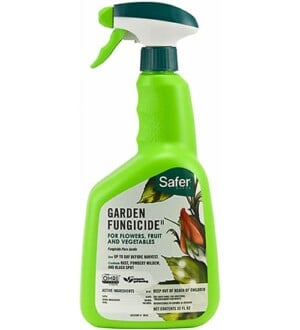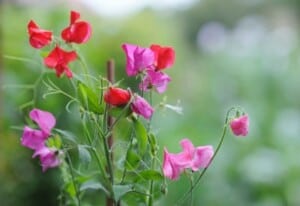It’s the time of year when powdery mildew raises in its dusty, unattractive and growth-sapping cloud. It’s the most common and widespread of fungal diseases, attacking both fruit trees, ornamentals and vegetable plants. Controlling it presents special challenges to the organic gardener. And this summer’s weather patterns — warm and dry — tend to favor its spread.
With its patchy, gray, talcum-like dust that covers leaves and stem, powdery mildew is easy to spot. Detecting it early is one of the many reasons to regularly give your plants close inspection. Once it turns black, which signifies that it’s starting to fruit, you’ll have real problems controlling it from spreading. While the fungal threads that make up powdery mildew stay on a plant’s surface and aren’t as harmful as some other diseases, they can retard growth and affect flavor, especially on fruits.

IT'S ORGANIC!
Garden Fungicide
Use to control a long list of fungal diseases including mildew, rust and scab.
Learn moreHealthy soils and correct growing conditions are the best ways to prevent many plant problems from occurring. But if you notice a white to gray powdery growth it’s time to hit them with one of our organic fungicides. Most are made from naturally-available oils, some are even listed with OMRI for use on organic gardens.
Controlling powdery mildew starts in the spring by choosing plant varieties that are resistant to the fungus. Give your mildew-susceptible plants plenty of room so that air can circulate between leaves and stems. Water the plant close to its base, rather than from the top, and water early in the day to give excess moisture a chance to evaporate from the plant’s surface. Avoid late summer applications of nitrogen fertilizer which will encourage the growth of succulent plant tissue that the mildew favors.
There are natural controls that work on powdery mildew. Some organic gardeners recommend a spray of one part cow’s milk and nine parts water. Another home-made solution is to make a spray with one teaspoon baking soda in a quart of water. It’s thought that raising the pH of the plant’s surface discourages the fungus. We can’t speak directly to the effectiveness of these two methods. But here’s what we do know. The best control is to get tough. Prune away leaves and stems — entire plants if you have to — as soon as you see signs of mildew. Carry the trimmings away carefully so as not to spread the fungus. Don’t put the pruned material in your compost where the spores will have a chance to overwinter and later be spread in your garden. When removing plants in the fall, do the same. Don’t return anything with signs of mildew back into the soil. Here’s further advice on controlling powdery mildew on your ornamentals (PDF). And here’s helpful information concerning fruit trees and berries.












